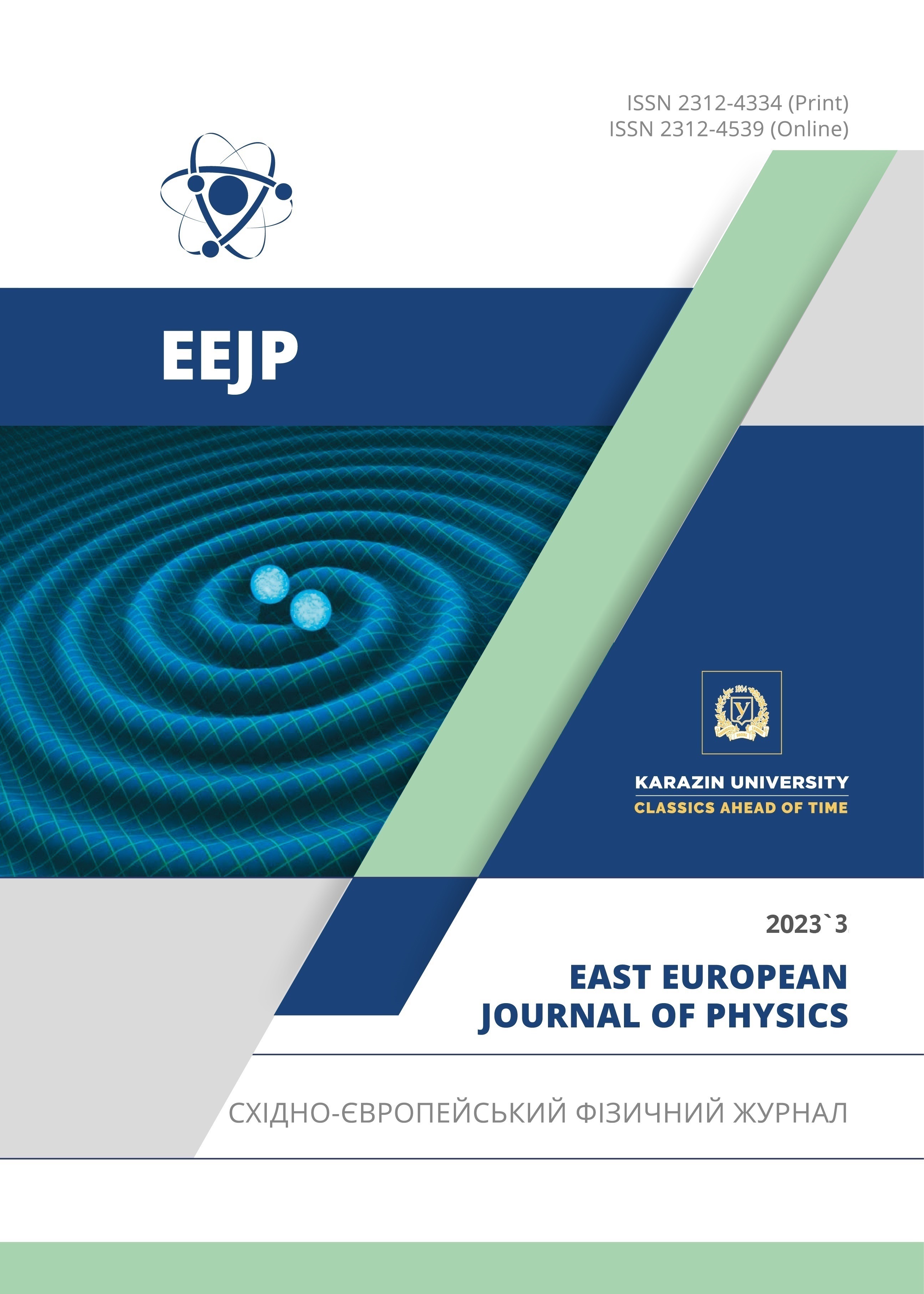Advancements in Thermoluminescence Dating: A Case Study of Medieval Brick Structures in Azerbaijan
Abstract
The study aimed to improve the precision of dating historical landmarks, specifically the Ballabur castle in Lenkaran, Azerbaijan Republic, using the thermoluminescence dating (TL) method. The annual dose rate, calculated with a -spectrometer equipped with a hyper-pure germanium detector, was found to be 2.98±0.19 mGy/year. By employing an online dose rate and age calculator, the sample's age was determined to be 920±50 years, consistent with the historical estimates of this region.
Downloads
References
E. Ekdal, A. Ege, T. Karali, and Z. Derin, “Luminescence dating studies of Yeşilova Hoyuk,” Geochronometria, 39(4), 268-275, (2012), https://doi.org/10.2478/s13386-012-0013-5
I.K. Bailiff and N. Holland, “Dating bricks of the last two millennia from Newcastle upon Tyne: a preliminary study,” Radiat. Meas. 32(5-6), 615-619 (2000), https://doi.org/10.1016/S1350-4487(99)00286-3
M. Altihan, T. Koralay, and E. Sahiner, “Luminescence dating and mineralogical investigations of bricks from erikli basilica in Stratonikeia ancient city (SW-Turkey),” Mediterr. Archaeol. Archaeom., 18(1), 77-91 (2018), https://doi.org/10.5281/zenodo.1069527
R. Podoba, T. Kaljuvee, I. Štubňa, Ľ. Podobník, and P. Bačík, “Research on historical bricks from a Baroque Church,” J. Therm. Anal. Calorim. 118(2), 591-595 (2014), https://doi.org/10.1007/s10973-013-3417-4
A. Zink, and E. Porto, “La datation par luminescence sur les objets de collection : une problématique spécifique,” Technè, 24(52), 12-13 (2021). https://doi.org/10.4000/techne.9543
C.X. Wang, et al., “Quartz OSL and TL dating of pottery, burnt clay, and sediment from Beicun archaeological site, China,” Quat. Geochronol. 70, 101281 (2022), https://doi.org/10.1016/j.quageo.2022.101281
A.G.A.G. Wintle, “Luminescence dating: Laboratory procedures and protocols,” Radiat. Meas. 27(5-6), 769-817 (1997). https://doi.org/10.1016/S1350-4487(97)00220-5
D. Mebhah, D. Imatoukene, F.Z. Abdelazziz, and Z. Lounis-Mokrani, “Evaluation of trap parameters associated with thermoluminescence peaks in fired quartz,” Radiat. Meas. 41(7-8), 813-818 (2006), https://doi.org/10.1016/j.radmeas.2006.04.005
A.K. Singh, I. Manna, P.P. Kumar, A. Dawar, P.P. Kumar, and M.K. Murari, “A new and effective method for quartz-feldspar separation for OSL and CRN dating,” Quat. Geochronol. 72, 101315 (2022), https://doi.org/10.1016/j.quageo.2022.101315
S. Woor, J.A. Durcan, S.L. Burrough, A. Parton, and D.S.G. Thomas, “Evaluating the effectiveness of heavy liquid density separation in isolating K-feldspar grains using alluvial sediments from the Hajar Mountains, Oman,” Quat. Geochronol. 72, 101368 (2022), https://doi.org/10.1016/j.quageo.2022.101368
S. Mammadov, A. Ahadova, A. Abishov, and A. Ahadov, “The Thermoluminesscence Parameters of Irradiated K-Feldspar,” East Eur. J. Phys. 2, 182-186 (2023), https://doi.org/10.26565/2312-4334-2023-2-18
M.J. Aitken, Thermoluminescence Dating, (Academic Press INC., 1985).
J.A. Durcan, G.E. King, and G.A.T. Duller, “DRAC: Dose Rate and Age Calculator for trapped charge dating,” Quat. Geochronol. 28, 54-61 (2015), https://doi.org/10.1016/J.QUAGEO.2015.03.012
Copyright (c) 2023 Sahib Mammadov, Aqshin Abishov

This work is licensed under a Creative Commons Attribution 4.0 International License.
Authors who publish with this journal agree to the following terms:
- Authors retain copyright and grant the journal right of first publication with the work simultaneously licensed under a Creative Commons Attribution License that allows others to share the work with an acknowledgment of the work's authorship and initial publication in this journal.
- Authors are able to enter into separate, additional contractual arrangements for the non-exclusive distribution of the journal's published version of the work (e.g., post it to an institutional repository or publish it in a book), with an acknowledgment of its initial publication in this journal.
- Authors are permitted and encouraged to post their work online (e.g., in institutional repositories or on their website) prior to and during the submission process, as it can lead to productive exchanges, as well as earlier and greater citation of published work (See The Effect of Open Access).








